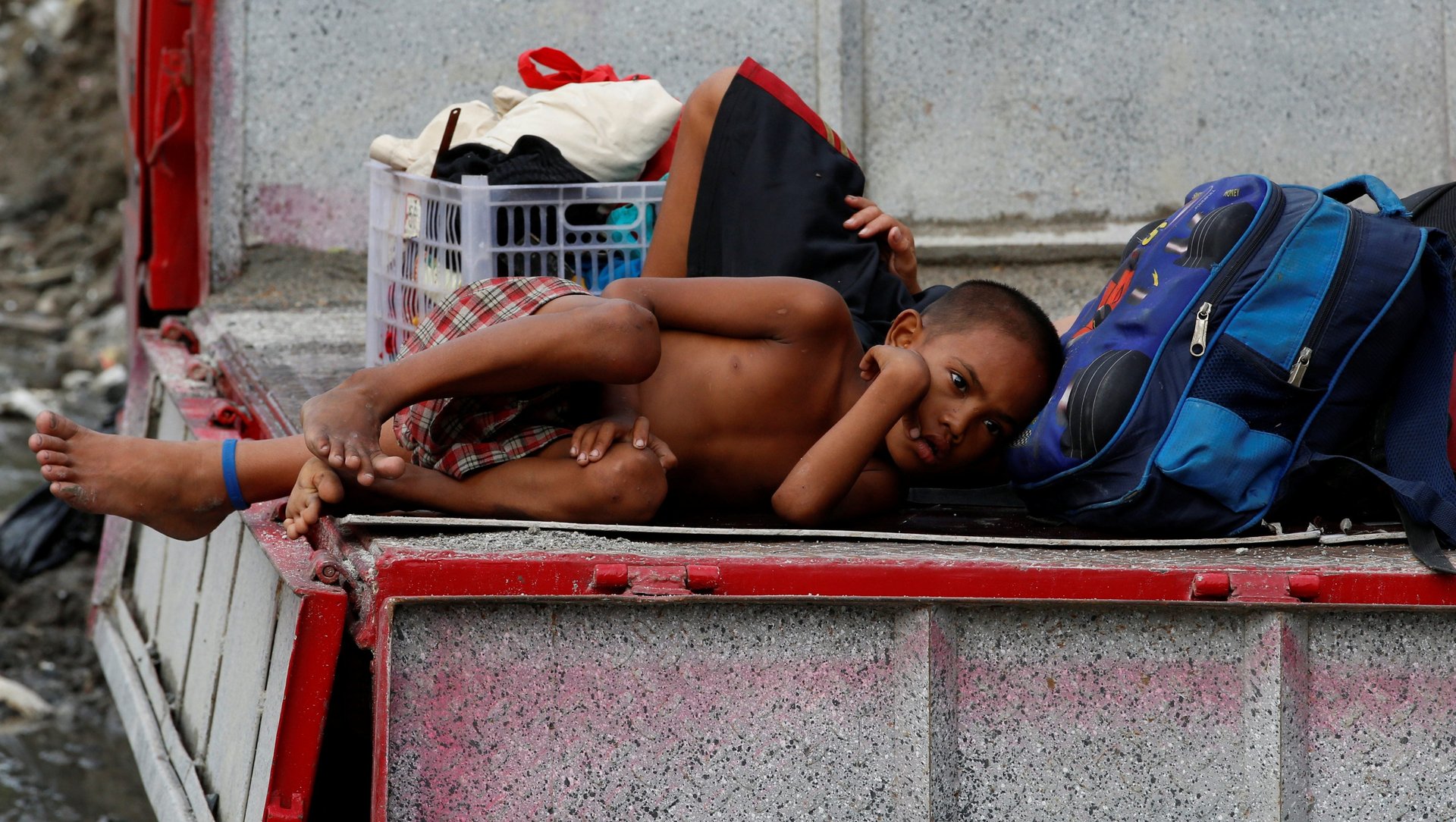The Philippines doesn’t know what to do with its homeless people during Miss Universe
With plans for hosting the Miss Universe competition in January 2017 underway in the Philippines, tourism secretary Wanda Teo, was asked a somewhat controversial question at a recent press conference.


With plans for hosting the Miss Universe competition in January 2017 underway in the Philippines, tourism secretary Wanda Teo, was asked a somewhat controversial question at a recent press conference.
“How will you deal with what some consider to be “eyes sores” in Metro Manila?” a journalist asked. “Do you have a plan to send street dwellers on vacation?”
“I think we’re going to do that too, like when we did with the APEC (Asia-Pacific Economic Cooperation) and during the arrival of the Pope, when they came over, when he came over,” said Teo on Sept. 1.
When world leaders convened in Manila for the APEC summit earlier this year, Human Rights Watch said that hundreds of impoverished homeless families were “detained” to hide them out of sight. They were reportedly being held at three government centers for homeless people. The Department of Social Welfare and Development (DSWD) Secretary Corazon Soliman said that the move was for the welfare of the street dwellers, to “provide them with proper services so they will no longer return to the streets.”
When Pope Francis visited the Philippines last January, 340 members of 100 homeless families were removed from Roxas Boulevard, a prominent Manila thoroughfare, and taken to a beach resort in Batangas about 55 miles away. Politicians called for an inquiry into the Philippines Department of Social Welfare and Development for allegations that $97,600 in government funds were utilized to keep homeless families out of eyesight for the duration of his visit.
The department said that it had already planned the six-day training course as part of the government’s Modified Conditional Cash Transfer Program, described on the website as a “complete package of assistance to street families.” The families reportedly stayed at the Chateau Royale Sports and Country Club and went swimming. They returned to Manila the day Pope Francis left.
This practice of removing homeless people during international events is a common tactic in Manila, where one in every four people live in informal settlements. In anticipation of the annual meeting of Asian Development Bank Board of Governors in 2012, the government erected a temporary wall across a bridge on road from the Philippine capital’s airport to the downtown area. Just behind the wall was what the government wanted to keep out of sight–an sprawling slum.
“I see nothing wrong with beautifying our surroundings,” said then-chairman of the Metropolitan Manila Development Authority Francis Tolentino. ” We are not trying to keep the poor out of the picture.”
Former first lady Imelda Marcos ordered the construction of similar whitewashed walls along the route to the Miss Universe pageant held in Manila in 1974. She was also notorious for ordering the demolition of informal settlements by the city’s airport.
The current government seems to be changing its attitude somewhat. In response to questions about the tourism secretary’s comments, DSWD secretary Judy Taguiwalo reportedly texted journalists on Thursday saying, “The instruction from President Duterte is don’t hide them.”